The Importance of Fast Website Design in Today’s Digital World

In today’s digital age, where seconds count, the importance of #website_speed and #fast_website_design has become more crucial than ever.
Internet users have no patience for page loading, and research shows that even a one-second delay in load time can lead to a significant decrease in conversion rates and an increase in bounce rate.
A slow website not only disappoints users but also harms your credibility and brand.
Google and other search engines also consider site speed as an important factor in page ranking.
Therefore, a high-speed website not only provides a better user experience (UX) but also significantly helps improve SEO and your visibility in search results.
Search engine optimization is no longer just about content; the technical performance of the site, including load speed, plays a key role.
This topic, achieving a fast and efficient website design, is considered a strategic investment for any online business.
Understanding this importance is the first step towards an optimized and successful website.
Are you bothered by losing customers due to your online store’s outdated appearance or slow speed? Rasaweb’s expert team solves these problems with professional e-commerce website design!
✅ Increase customer trust and your brand’s credibility
✅ Stunning speed and excellent user experience
Get a free consultation with Rasaweb right now ⚡
Key Factors in Achieving a High-Speed Website
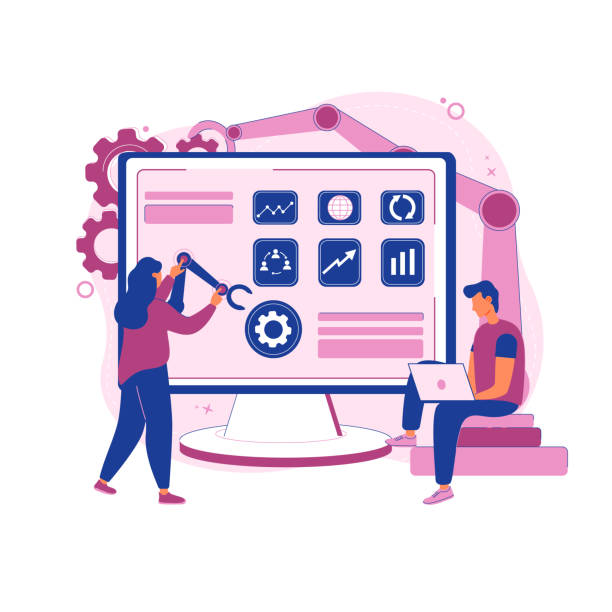
To achieve a fast website design, several #key #technical factors must be considered, each influencing load time.
The first and most important factor is #optimized_coding.
HTML, CSS, and JavaScript codes should be light, clean, and free of unnecessary errors.
Using minified code and removing unnecessary code can significantly reduce file sizes.
The second factor is optimizing images and multimedia content.
High-volume images without proper compression are among the main reasons for slow websites.
Using modern image formats like WebP and lossless compression can make a significant difference.
The third factor is #Caching or temporary data storage.
By using caching techniques, users’ browsers can store some website files for subsequent visits, significantly reducing load time.
Using a Content Management System (CMS) like WordPress, which is optimized for speed and has strong caching plugins, can be helpful.
Additionally, choosing a reputable and high-speed hosting provider, as well as utilizing a Content Delivery Network (CDN) to distribute content from the closest server to the user, are other vital factors for achieving fast website design.
All these factors together form a complete puzzle, resulting in a high-speed and optimized website.
Advanced Tools and Techniques for Speed Optimization
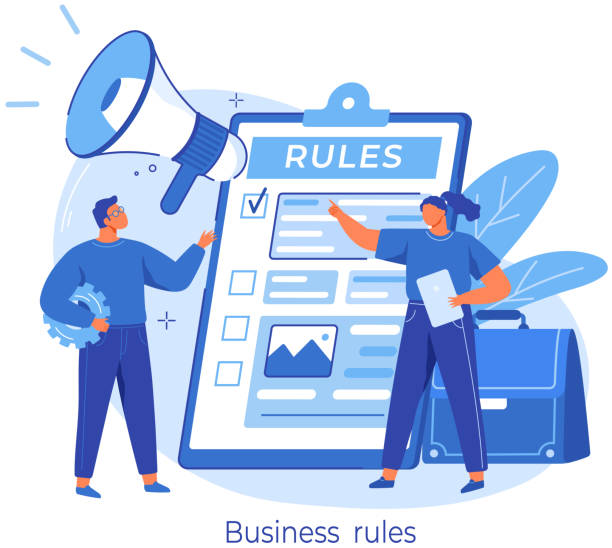
To achieve a fast website design, it is essential to know and use #advanced_tools and #techniques.
One of the most important techniques is #GZIP_compression, which significantly reduces data transfer time by decreasing the size of text files (such as HTML, CSS, and JS) before sending them to the browser.
Minification tools also help remove extra characters, spaces, and comments from CSS and JavaScript codes without affecting code performance.
Google PageSpeed Insights, GTmetrix, and Pingdom Tools are among the performance analysis tools that identify your website’s speed weaknesses and provide suggestions for improvement.
Using advanced caching systems like Redis or Memcached at the server level can significantly improve database response time.
Also, implementing Lazy Loading for images and videos ensures that multimedia content is loaded only when it enters the user’s viewport, which helps reduce initial page load time.
For larger projects and high-traffic websites, using a Content Delivery Network (CDN) like Cloudflare or Akamai is essential; a CDN copies static website content to various geographical servers and serves it to users from the closest server, which is a significant factor in achieving fast website design.
| Technique | Description | Impact on Speed | Implementation Complexity |
|---|---|---|---|
| GZIP Compression | Reduces the size of HTML, CSS, JS files on the server | High (reduces data transfer time) | Medium (server settings) |
| Code Minification | Removes unnecessary characters from code | Medium (reduces file size) | Low (tools/plugins) |
| Caching | Temporarily stores files in user’s browser/server | Very High (reduces requests) | Medium to High (requires configuration) |
| Image Optimization | Compresses and changes image formats | Very High (reduces file size) | Low (tools/plugins) |
| Using CDN | Distributes content from the nearest server | Very High (reduces network latency) | Medium (requires service subscription) |
Impact of Website Speed on User Experience and SEO Ranking
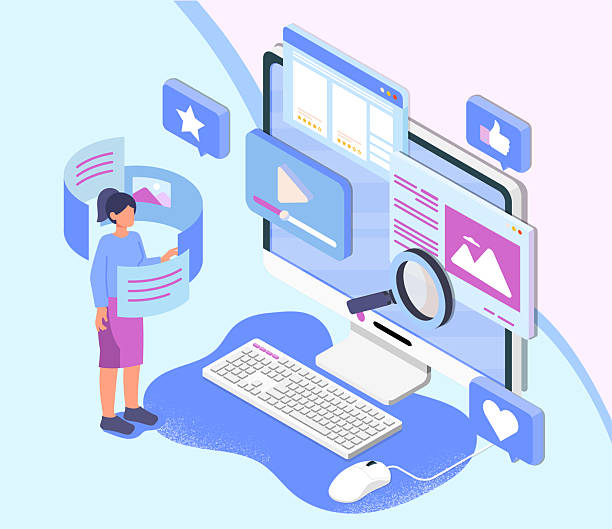
One of the most important reasons businesses turn to fast website design is its #direct_impact on #user_experience and consequently on #SEO_ranking.
Today’s users are impatient, and if a website doesn’t load within a few seconds, they quickly abandon it.
This early abandonment leads to an increased “bounce rate,” which sends a negative signal to search engines.
Search engines like Google, in order to provide the best results to users, prefer websites with high speed and good user experience and display them in higher ranks.
In addition to bounce rate, user dwell time on the site and the number of pages a user views are also affected by site speed.
A high-speed site encourages users to stay longer and view more pages, which in turn is a positive signal for SEO.
Google’s algorithms are increasingly focusing on factors related to user experience, and site speed is one of the most prominent of these factors.
Therefore, any investment in improving site speed not only means greater customer satisfaction but also a way to increase visibility in search results and attract more traffic.
Ultimately, fast website design is a critical factor for success in digital marketing.
Are you dissatisfied with the low conversion rate of visitors to customers on your e-commerce site?
Solve this problem permanently with professional e-commerce website design by Rasaweb!
✅ Increase visitor-to-customer conversion rate
✅ Create an excellent user experience and build customer trust
⚡ Get a free consultation
Common Website Design Mistakes and How to Avoid Them
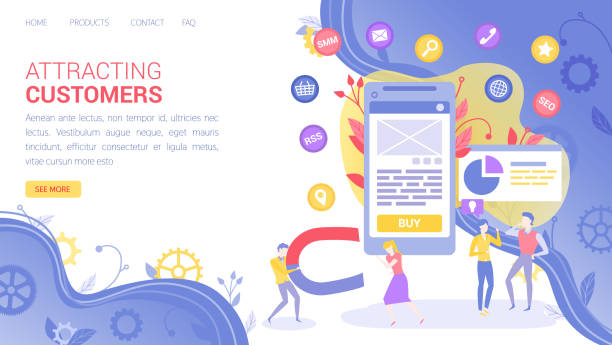
On the path to achieving fast website design, there are #common #mistakes that can render efforts ineffective.
Understanding these mistakes and #how to avoid them is essential for every developer and business owner.
One of the biggest mistakes is #not_optimizing images and using very high-volume images.
This issue can easily multiply page load time several times over.
The solution is to always compress images, use appropriate formats (like WebP), and utilize Lazy Loading.
Another error is overloading with unnecessary scripts and plugins.
Every additional plugin or script adds to the page size and increases processing time.
Regular review and removal of unused plugins and heavy scripts are crucial.
Also, using an unsuitable or shared hosting server with limited resources can severely impact site speed.
Choosing a reputable hosting provider, commensurate with the site’s traffic needs, is of high importance.
Not using caching is another common mistake.
Without caching, every time a user visits the site, all content must be reloaded from the server.
Implementing a strong caching system optimizes this process.
Finally, neglecting the structure and size of codes, especially CSS and JavaScript, can lead to “render-blocking” codes that halt page loading.
Optimizing and minifying codes, and loading scripts at the bottom of the page (or asynchronously/deferred) are important solutions to prevent these mistakes and achieve fast website design.
Optimizing Images and Multimedia Content for Increased Speed
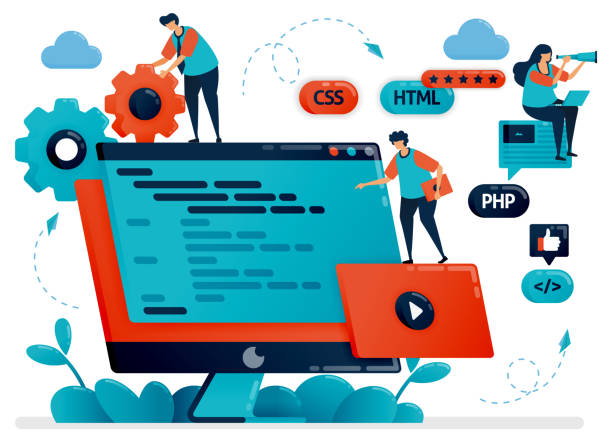
One of the most important steps towards fast website design is #optimizing images and #multimedia_content.
Images often constitute the largest portion of a web page’s size and can significantly impact load time.
To begin, it is necessary to adjust the physical size of images to match their display location on the site.
Loading a 4000-pixel image to display in a 200-pixel frame is a waste of resources and reduces speed.
The next step is #image_compression.
Many online and offline tools for lossless compression exist that can significantly reduce file sizes.
Using appropriate image formats is also important.
For images with many details and diverse colors, JPEG is suitable, while for logos, icons, and images with transparent backgrounds, PNG and SVG are better options.
Additionally, next-generation formats like WebP offer better compression while maintaining quality and should be prioritized.
Regarding videos and other multimedia content, using external services like YouTube or Vimeo for hosting and playback can offload your server.
Also, implementing #Lazy_Loading for all images and videos, especially those “below the fold,” is essential.
This technique ensures that content is loaded only when the user scrolls to that part of the page, which dramatically reduces initial page load time and helps achieve fast website design.
Choosing the Right Host and Using a CDN for More Speed
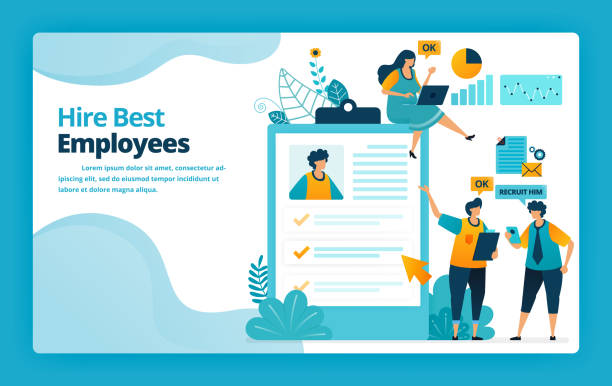
Choosing the #right_host and utilizing a #Content_Delivery_Network (CDN) are cornerstones on the path to #fast_website_design.
Web hosting is where your website files are stored on servers, and its quality directly impacts the speed at which users access your site.
Shared hosting, despite its low price, usually has limited resources, and its speed is affected by the performance of other websites hosted on the same server.
For medium to high-traffic sites, dedicated hosting, Virtual Private Servers (VPS), or Cloud Hosting are better options; these provide dedicated resources and more stable performance.
When choosing a host, also pay attention to the geographical location of the servers, as the physical distance between the server and the user affects load time.
A CDN (Content Delivery Network) copies your website’s static content (such as images, CSS, JS) to multiple servers worldwide, allowing users to receive content from the closest server.
This significantly reduces latency and increases load speed, especially for users accessing your site from distant locations.
Services like Cloudflare, Akamai, and Amazon CloudFront are among the popular CDNs.
The combined use of a strong hosting provider and an efficient CDN ensures that your website is accessible to users anywhere in the world at the maximum possible speed, leading to a truly fast website design.
| Hosting Type | Advantages | Disadvantages | Suitable For |
|---|---|---|---|
| Shared Hosting | Cheap, easy setup | Lower speed, limited resources, affected by other sites | Small and new websites |
| Virtual Private Server (VPS Hosting) | Dedicated resources, high flexibility, good speed | Requires technical knowledge, more expensive than shared | Medium websites with growing traffic |
| Cloud Hosting | High scalability, stability, very high speed | More complexity, variable cost | Large websites with fluctuating traffic |
| Dedicated Server | Full control, maximum speed and performance, high security | Very expensive, requires deep technical knowledge | Very large websites and complex applications |
Mobile-First Approach and Fast Website Design for Mobile Devices

Given the increasing use of #mobile_devices for internet access, adopting a #mobile-first_approach and focusing on #fast_website_design for phones and tablets is no longer an option but a necessity.
Google also gives special importance to this in its ranking algorithms and first examines a site’s mobile version for indexing and ranking (Mobile-first Indexing).
This means that if your site is slow or unusable on mobile, even if it performs excellently on desktop, it will not achieve a good SEO ranking.
To achieve fast mobile website design, you should consider Responsive Design from the very beginning.
This type of design ensures that your site is displayed correctly on any screen size.
Furthermore, optimizing content for mobile is very important.
Reducing the number of HTTP requests, maximizing image compression, using lighter codes, and avoiding heavy JavaScript scripts that can negatively impact mobile performance are among the necessary actions.
Implementing Accelerated Mobile Pages (AMP) can also help super-fast page loading on mobile, especially for news content.
The mobile user experience should be smooth and without delay so that users are not discouraged.
In summary, paying attention to technical and aesthetic details in the mobile version is crucial for achieving fast and successful website design.
Is your e-commerce site ready to attract maximum customers and increase sales? Rasaweb transforms your online business with modern and efficient e-commerce website design.
✅ Increased speed and improved SEO
✅ Excellent user experience on mobile and desktop⚡ Get a free e-commerce website design consultation from Rasaweb!
Continuous Monitoring and Maintenance of Website Speed
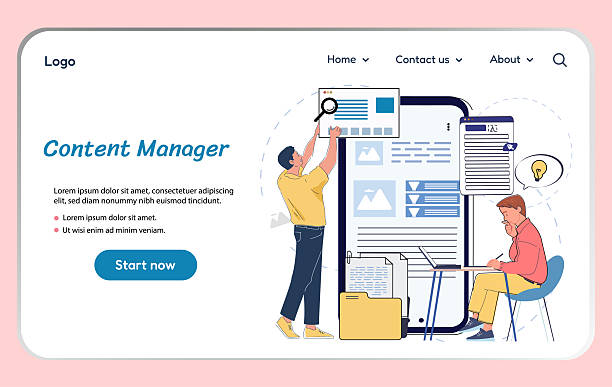
Achieving fast website design is not a one-time process but requires #continuous #monitoring and #maintenance.
Websites are living, dynamic entities whose speed can be affected by the addition of new content, plugins, changes in traffic, and software updates.
Therefore, it is necessary to regularly evaluate your site’s performance and identify potential issues.
Performance #monitoring_tools like Google PageSpeed Insights, GTmetrix, Lighthouse, and Pingdom Tools should be used continuously.
These tools provide detailed reports on load time, page size, number of requests, and recommendations for improvement.
You can also use Real User Monitoring (RUM) tools that analyze site performance from the perspective of your actual users.
Regularly updating your Content Management System (CMS), themes, and plugins is also very important, as new versions often include performance and security improvements.
Regular backups of your site and database are also crucial in case of problems.
Checking server logs to identify errors or excessive resource consumers can also be helpful.
With an active maintenance plan and continuous monitoring, you can ensure that your website always remains at its peak speed and provides the best experience to your users.
Maintaining fast website design requires continuous commitment and attention.
The Future of Fast Website Design and Upcoming Challenges

With the increasing advancement of #technology and user #expectations, the #future of #fast_website_design is constantly evolving.
While current optimizations focus on reducing file sizes, code optimization, and infrastructure, the next generation of website speeds may be shaped by new factors.
Technologies such as Artificial Intelligence and Machine Learning can be used in the future for automatic and dynamic website optimization, for example, by predicting user behavior and loading content before it’s actually needed.
The emergence of fifth-generation internet (5G) networks will also have a significant impact, as connection speeds will dramatically increase.
However, even with high 5G speeds, site optimization will remain essential, as web content is gradually becoming more complex and heavier.
Challenges such as data privacy, cybersecurity, and the technical complexities of Web 3.0 can also affect the process of fast website design.
In the future, the focus may shift from merely “load speed” to “interaction speed” and full “responsiveness” of the site, meaning websites should not only load quickly but also be immediately usable and responsive to user input.
This implies that developers should adopt newer architectures like PWA (Progressive Web Apps) and JAMstack, which provide an app-like user experience with high speed and security.
Consequently, for fast website design in the future, we will need innovation and adaptation to technological changes.
Frequently Asked Questions
| Question | Answer |
|---|---|
| What does fast website design mean? | Optimizing a website for fast page loading in users’ browsers, which leads to a better user experience and higher ranking in search engines. |
| Why is website load speed important? | Increased user satisfaction, reduced Bounce Rate, improved SEO, and increased conversion rates, as users expect sites to open quickly. |
| What factors affect site speed? | Image size, unoptimized coding (CSS, JS, HTML), inappropriate host choice, lack of caching, high number of HTTP requests, and not using a CDN. |
| How can website load speed be improved? | Compressing images, optimizing and minifying codes, using caching, enabling Gzip compression, using a CDN, and choosing powerful hosting. |
| What is a CDN and how does it help site speed? | A CDN (Content Delivery Network) stores website content on various geographical servers and serves content from the closest server to the user, which reduces load time. |
| How significant is hosting’s role in site speed? | Very significant. Powerful and suitable hosting with sufficient resources, high bandwidth, and optimized servers forms the foundation of a website’s speed. |
| How does image optimization affect site speed? | Images are usually the heaviest part of a web page. Compressing and optimizing them without much quality loss significantly reduces page size and increases load speed. |
| Does site speed affect SEO? | Yes, Google and other search engines consider site speed as one of the ranking factors. Faster sites have a better chance of higher rankings. |
| What tools are available for measuring site speed? | Google PageSpeed Insights, GTmetrix, Pingdom Tools, and Lighthouse, each providing reports and suggestions for speed improvement. |
| How does Caching help site speed? | Caching allows static website content to be stored for subsequent user visits. As a result, the browser does not need to re-download all content, and pages load much faster. |
And other services of Rasaweb Advertising Agency in the field of advertising
Smart Data Analysis: Designed for businesses looking to manage campaigns through Google Ads management.
Smart Sales Automation: Designed for businesses looking to analyze customer behavior through SEO-driven content strategy.
Smart Advertorials: A fast and efficient solution for campaign management focusing on custom programming.
Smart UI/UX: A fast and efficient solution for improving SEO ranking focusing on marketing automation.
Smart SEO: A professional solution for increasing sales focusing on precise audience targeting.
And over a hundred other services in the field of internet advertising, advertising consultation, and organizational solutions
Internet Advertising | Advertising Strategy | Advertorial
Resources
Website Design Guide on IranHostIncrease Website Speed on MizbanfaEfficient Website Design Tips on WebsimaComprehensive Website Design Tutorial on Hamyarweb
💡 Ready to transform your business in the digital world? Rasaweb Afarin Digital Marketing Agency paves your way to success by providing comprehensive services including custom website design, SEO, and online advertising.
📍 Tehran, Mirdamad Street, next to Bank Markazi, Kazeroon Jonubi Alley, Ramin Alley, No. 6



